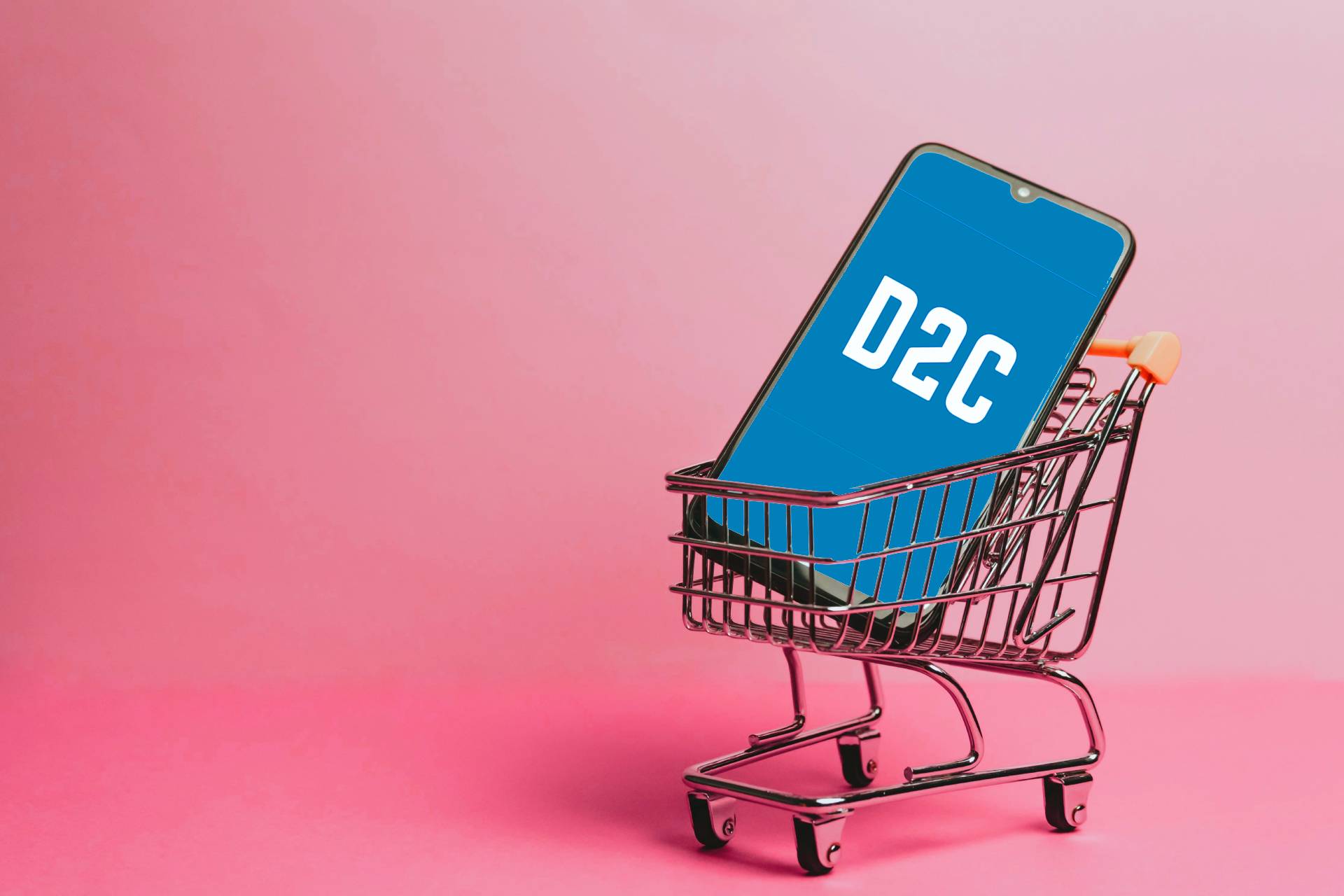The Direct-to-Consumer (D2C) business model is revolutionizing the way brands interact with their customers. By cutting out the middlemen, companies can sell directly to consumers, offering more personalized experiences and better control over their brands. This comprehensive guide delves into the ins and outs of D2C e-commerce, explaining why this business model is becoming a preferred choice for many businesses and how you can implement it effectively.
What Does D2C Mean for Your Business?
Understanding what D2C means is crucial for any brand considering this model. D2C allows businesses to bypass traditional retailers and sell their products directly to consumers through online platforms. This approach not only enhances the customer experience by offering more personalized products and services but also increases profitability by eliminating the costs associated with wholesalers and distributors.
The Evolution of the D2C Business Model
D2C isn’t just a trend; it’s an evolving business strategy that adapts to changing consumer behaviors and technological advancements. Initially popularized by brands like Dollar Shave Club and Warby Parker, D2C has grown to include a wide range of products and services, from apparel to food and beverages. Understanding this evolution helps businesses anticipate changes and adapt their strategies accordingly.
Advantages of Adopting a D2C Model
The D2C model offers numerous advantages over traditional retail, including increased control over brand management, direct customer relationships, and greater margins. By selling directly, brands can gather valuable customer data, which can be used to enhance marketing strategies and product development. Additionally, D2C brands often experience quicker response times to market changes and consumer feedback, allowing for more dynamic business operations.
Navigating B2C and B2B Dynamics in the D2C Landscape
In the realm of direct-to-consumer sales, distinguishing between B2C (Business-to-Consumer) and B2B (Business-to-Business) models is crucial. While D2C inherently focuses on selling products directly to consumers, bypassing traditional retail channels, some D2C brands may also engage in B2B by supplying other businesses with their products in bulk. This hybrid approach allows brands to diversify revenue streams and increase market penetration, making the business more resilient against market fluctuations.
Transforming Retail Stores to Fit the Direct-To-Consumer Model
The rise of D2C models challenges traditional retail stores to evolve. Instead of just serving as points of sale, retail stores can become experiential centers where customers interact directly with the brand, enhancing the traditional retail model. This adaptation not only preserves the relevance of physical stores but also creates a seamless omnichannel experience that combines the tactile advantages of physical stores with the convenience of online shopping.
The Impact of the Pandemic on E-commerce and D2C Strategies
The global pandemic has dramatically accelerated the shift towards e-commerce and D2C models, as lockdowns and social distancing measures forced consumers to shop online. This shift has prompted both seasoned ecommerce companies and traditional retail brands to reassess and often pivot their strategies to meet the increased demand for direct, online interactions and transactions with consumers.
Leveraging Online Shops for Direct Consumer Engagement
Establishing an online shop is now essential for direct-to-consumer business success. An effective online presence allows brands to control the narrative around their products, engage directly with consumers, and gather invaluable data that can be used to personalize the shopping experience. This direct line to the consumer enhances brand loyalty and dramatically increases the potential for repeat business.
Adapting the Traditional Model to Modern E-commerce Demands
Traditional business models must evolve to stay competitive in the burgeoning D2C and e-commerce landscape. This evolution often involves integrating digital platforms, adopting direct-to-consumer sales strategies, and rethinking how products are presented and delivered to meet the modern consumer’s expectations for convenience, speed, and personalization.
Why Good Business Practices Matter for D2C Success
Good business practices are the foundation of successful direct-to-consumer operations. This includes everything from ethical sourcing and production processes to transparent marketing and genuine customer engagement. Brands that prioritize these practices are more likely to build trust and loyalty with their consumers, which is crucial for long-term success in the D2C domain.
How to Transition from Traditional to D2C E-commerce
Transitioning to a D2C model requires careful planning and execution. Brands must consider how to set up an online store, handle fulfillment and shipping, and manage customer service. Key steps include choosing the right e-commerce platform, developing a robust marketing plan, and ensuring that logistics and supply chain management are capable of handling direct sales.
Key Components of a Successful D2C Strategy
A successful D2C strategy involves more than just selling online. It requires a holistic approach that includes building a strong brand presence, engaging directly with consumers through social media and email marketing, and utilizing data analytics to drive decisions. Brands should focus on creating high-quality content and leveraging influencer marketing to enhance visibility and credibility.
Understanding What Brands Need to Succeed in the D2C Model
For brands venturing into the direct-to-consumer model, understanding their intrinsic needs is crucial. Success requires more than just an attractive product lineup; it demands robust logistical support, a strong online presence, and an unshakeable commitment to customer service. Brands need to develop a deep understanding of their target market and tailor their offerings to meet those specific consumer needs and preferences effectively.
Navigating the Nuances of the B2C Model in D2C Strategies
The B2C model, pivotal in D2C strategies, focuses on selling products directly to the consumer, eliminating intermediaries like wholesalers or retail stores. This model requires brands to handle all aspects of the business, from product development and marketing to sales and customer support, which can be significantly rewarding as it allows for complete control over the brand experience and potentially higher margins.
Directly Delivering Products to Consumers with Enhanced Efficiency
In a D2C model, the capability to deliver products directly to consumers efficiently is a core component. This method not only simplifies the supply chain but also enhances the speed of delivery, allowing brands to respond quickly to consumer trends and demands. Effective direct delivery strategies include optimizing inventory management, streamlining fulfillment processes, and utilizing advanced shipping solutions to ensure timely deliveries.
Exploring the Key Differences Between D2C and Traditional Retail
One fundamental difference between D2C and traditional retail is the elimination of middlemen. D2C means that a brand sells directly to its customers without the involvement of retailers, distributors, or wholesalers, allowing for greater profit margins and enhanced customer relationships. This direct interaction provides valuable insights into consumer behavior and preferences, which can drive more personalized and effective marketing and sales strategies.
Harnessing Control Over Your Business in the D2C Model
Gaining control over your business is a significant advantage of the D2C model. This control allows brands to make decisions quickly without needing approval from retailers or other gatekeepers. It also enables a more agile response to market changes and consumer feedback, which can be crucial for rapid growth and adaptation in dynamic markets. Brands can also ensure consistency in their messaging and maintain the integrity of their vision throughout the customer experience.
Challenges Faced by D2C Companies
Despite its benefits, the D2C model comes with challenges, such as increased responsibility for customer service, higher marketing costs, and the need for significant logistics and fulfillment capabilities. Overcoming these challenges requires investment in technology and infrastructure, as well as ongoing efforts to optimize operations and reduce costs.
Examples of Successful D2C Brands
Learning from successful D2C brands can provide valuable insights for companies looking to adopt this model. Brands like Casper, Everlane, and Glossier have each carved out niches by offering unique products, exceptional customer experiences, and innovative marketing strategies. Analyzing their approaches helps other D2C companies replicate their success.
Future Trends in D2C Ecommerce
The future of D2C looks promising, with advancements in AI and machine learning expected to further personalize shopping experiences. Additionally, as more consumers look to purchase directly from brands for reasons of authenticity and exclusivity, the importance of maintaining a strong D2C presence will only increase.
Implementing Effective Inventory Management in D2C
Efficient inventory management is vital for D2C success. Brands must have systems in place to track inventory levels, predict demand, and manage restocking. Leveraging technologies like real-time inventory tracking and adopting a perpetual inventory system can help ensure that stock levels are appropriate and that order fulfillment is seamless.
Conclusion: Embracing the D2C Revolution
The shift to D2C represents a significant opportunity for brands to enhance their customer relationships, control their branding, and improve their margins. By understanding and implementing effective D2C strategies, businesses can not only survive but thrive in the evolving retail landscape.
Connect with PhaseV now to avail the best services at the most affordable prices.



